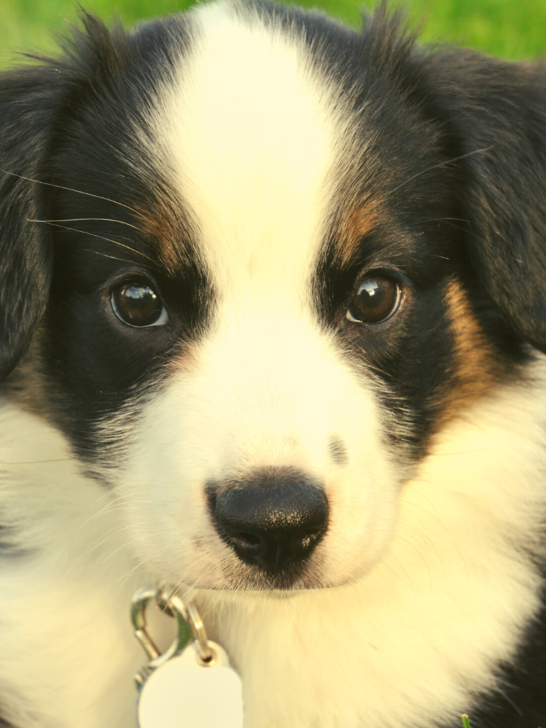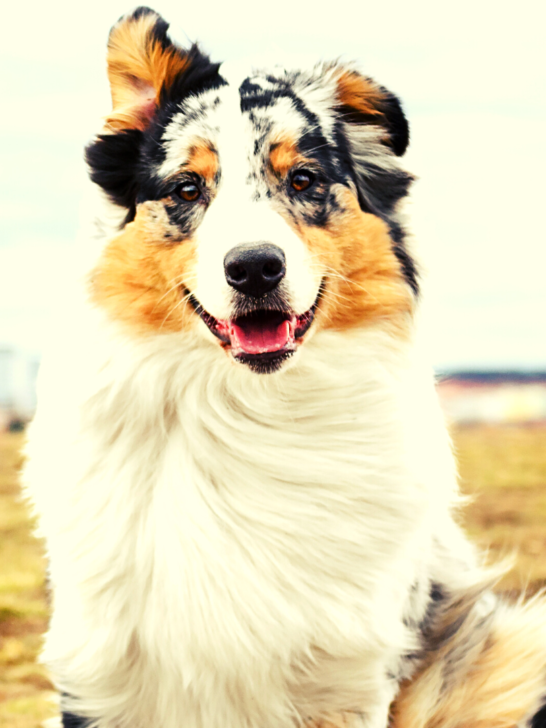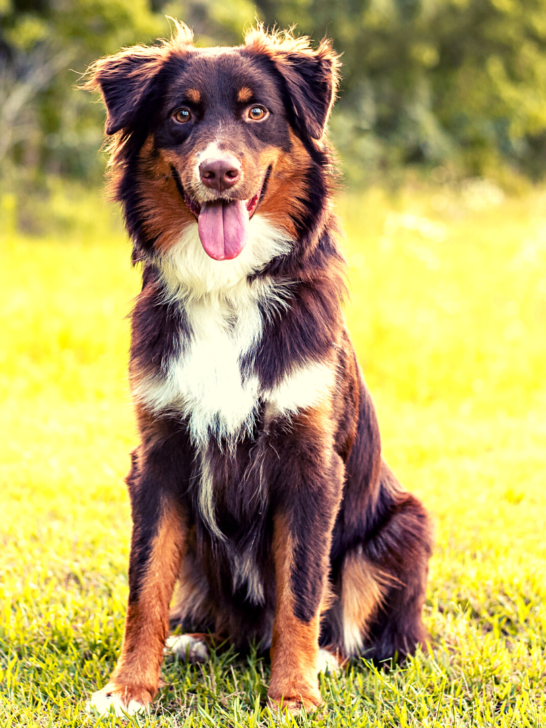St Bernard Australian Shepherd Mix: The True-Blue Working Friend
The St Bernard Australian Shepherd Mix is a mixed breed dog resulting from breeding the Australian Shepherd and the St Bernard.
The Australian Shepherd has a strong herding background, while the St Bernard are famously large search and rescue dogs. Mixing them makes for an intelligent, energetic dog that is also loyal and affectionate.
Below, we’ll take a look at what makes this breed so appealing, what training, exercise, and grooming they require as well as delve into the heritage of their parent breeds.
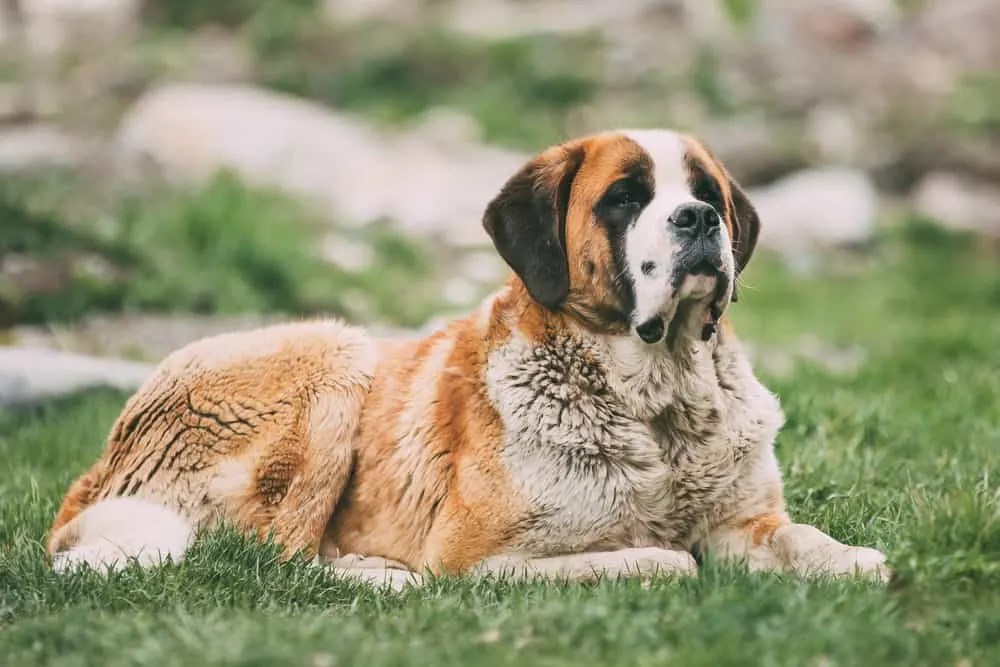
Dog breed history
It’s always a little difficult to get some history on hybrid dogs like the St Bernard Australian Shepherd Mix, but we’ll take a look at the history of its parent breeds below – the Australian Shepherd and St Bernard.
Australian Shepherd history
We should begin by saying the name of the Australian Shepherd is a bit misleading! Before it came to be known as the Australian Shepherd it was known as the Spanish Shepherd, Pastor Dog, Bob-Tail, New Mexican Shepherd, and California Shepherd.
It is believed that the breed originated from the Basque region in Spain where they were used by shepherds who then emigrated to the West Coast of the United States via Australia with their dogs.
While this is sometimes disputed, it is understood that this breed was developed in the western United States in the 19th and early 20th centuries. One theory is that they were named after the imported sheep they herded.
As the Australian Shepherd wasn’t as affected by altitude as other herding breeds it became a common and much-loved sheep herder in the Rocky Mountains.
The original breeders of Australian Shepherds were ranchers in Boulder, Colorado, who then began to sell and distribute the dogs all over the West.
St Bernard history
St Bernard is a very old breed of dog that descended primarily from the French Alps. Sometimes referred to as an Alpine Mountain Dog or Alpine Cattle Dog, these large dogs belonged to farmers and dairymen.
They were primarily livestock guardians, herding dogs, and draft dogs, as well as hunting dogs, watchdogs, and watchdogs. They are thought to be descendants of large breed dogs brought into the Alps by the Ancient Romans.
The earliest written records of the St Bernard breed come from monks that lived and worked in a hospice at the Great St Bernard Pass in 1707. But paintings and drawings of the breed date back earlier than that!
The monks trained the younger dogs for search and rescue work, by letting them watch the older dogs and learn from them.
The St Bernard’s reputation as a search and rescue dog dates back to a famous Saint Bernard named Barry (or Berry) who reportedly saved 40 to 100 lives as a search and rescue dog.
There is a monument to Barry in the Cimetière des Chiens, and his body was preserved in the Natural History Museum in Berne, Switzerland.
The Swiss St. Bernard Club was founded in Basel on 15 March 1884. It was the very first breed to be entered into the Swiss Stud Book in 1884, and the breed standard was finally approved in 1888. St Bernard has been the Swiss national dog ever since.
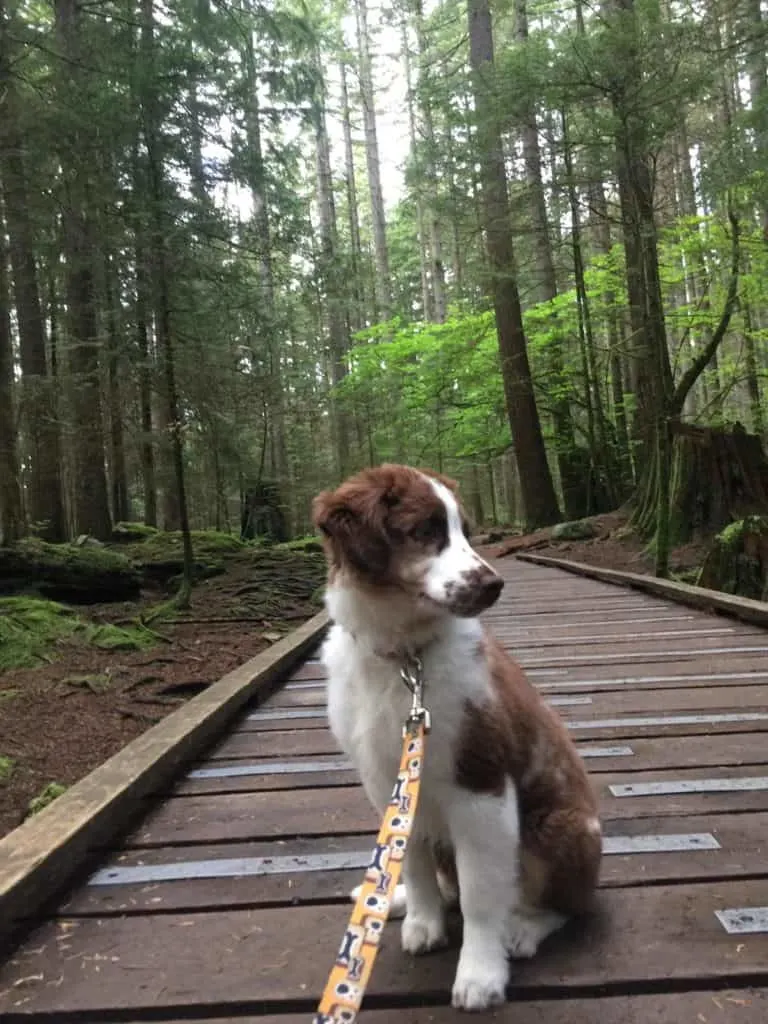
St Bernard Australian Shepherd Mix personality and temperament
Thanks to the very friendly and loving temperaments of its parent breeds, the St Bernard Australian Shepherd Mix is extremely intelligent, devoted, and loyal.
The St Bernard aspect helps to offset the high energy Australian Shepherds are known for. But if you’re not the most active person, then this may not be the breed for you.
While these dogs are friendly and well-mannered, they are wary of strangers which makes them a good watchdogs. They’re fun-loving and need outdoor space to be able to play.
Australian Shepherd personality and temperament
They may not be the most ferocious guard dogs, but that’s not why people love Australian Shepherds. They’re incredibly sweet and affectionate with children and other dogs. It’s very easy to get along with an Australian Shepherd!
However, while they are aloof with strangers they will eventually warm up to them.
St Bernard’s personality and temperament
As you would expect from their hospice dog heritage, St Bernards are friendly and welcoming.
They have a calm and benevolent temperament and are kind and careful around children. While they do appreciate attention, they’re not as demanding as some breeds.
St Bernard Australian Shepherd Mix size, height, and weight
Depending on the gene split, the average height of a St Bernard Australian Shepherd mix is between 20 and 35 inches tall.
Weight can also vary between the relative lightness of an Australian Shepherd at 50 lbs, or they can be as heavy as a St Bernard at 200 lbs.
Australian Shepherd size, height, and weight
The height of an Australian Shepherd is about 18-23 inches at the shoulder, and they can weigh anywhere from 35-75 lbs.
St Bernard size, height, and weight
The height of a St Bernard is about 28-35 inches at the shoulder, and they can weigh anywhere from 140-200 lbs.
St Bernard Australian Shepherd Mix training and exercise needs
To keep their energy levels down, be prepared to take them on extremely long walks and hikes. As the St Bernard is a rather mellow dog, the Australian Shepherd Mix will have a moderate energy level.
But exercise will keep them healthy and keep them from being agitated and destructive.
Remember, a tired dog is a good dog!
As they are extremely intelligent dogs, a St Bernard Australian Shepherd Mix will be easy to train, but they are also very stubborn. You will need to be strong, firm, and consistent as well as persistent so they don’t walk all over you.
All dogs respond best to positive reinforcement, so remember to praise them when they do well. More exercise also means easier training, as they love a physical challenge.
Proper socialization is also key, for all dogs and puppies. So they can become used to as many people and dogs as possible, make sure to take them to the park and doggy daycare regularly.

Australian Shepherd training and exercise needs
The Australian Shepherd’s intelligence combined with their extreme loyalty makes them one of the most trainable dog breeds out there. Training not only makes raising Aussies that much easier, but it also keeps them mentally stimulated!
Australian Shepherds are energetic dogs – it’s hard for them to keep still! They need a lot of physical exercise, which includes long, daily walks.
A large yard is also recommended as doing a few laps when they’re excited helps them to release all that pent-up energy until their next walk.
St Bernard training and exercise needs
Training St Bernards at an early age is imperative because they grow so large. It’s important to begin training when they’re still an easily manageable size.
St Bernards are intelligent dogs who are eager to please, but they’re also stubborn. They’re never aggressive unless they sense danger and want to defend a family member.
Early socialization is again so important here, and Saints need exposure to many different people, sights, sounds, and experiences while they’re young. Socialization ensures that your St Bernard puppy grows up to be a well-rounded dog!
While Saint Bernards only need moderate amounts of exercise, it’s important they exercise to prevent obesity. Obesity puts a lot of pressure on their joints and can lead to arthritis and orthopedic problems.
However, limit the amount of exercise you give your Saint Bernard puppy until they reach mature size. Monitor their weight and make sure they don’t put on weight too quickly. Also, don’t let them run or jump on slick floors.
You should also avoid exercising St Bernards during the heat of the day as they are prone to heat exhaustion and heatstroke. Ensure they have access to shade and fresh water and be aware of the signs of fatigue and heat exhaustion.
These are heavy panting, dark-red gums, and weakness or collapse.
St Bernard Australian Shepherd Mix grooming, shedding, and coat care
The Australian Shepherd Mix is a moderately shedding dog, but this will depend on the genetic split between an Aussie and a St Bernard. You’ll probably have to brush them a few times a week, and you should definitely invest in a good vacuum to keep your floors clear.
Give them baths when needed, but be careful not to dry out their skin.
Australian Shepherd grooming, shedding, and coat care
Admittedly, Aussies are not the easiest dogs to groom. They shed all year round, but especially in the spring. They also drool quite a bit, so cleaning up dried saliva from their coat is a must for good hygiene.

St Bernard grooming, shedding, and coat care
St Bernards can be found in two coat types, short-haired and long-haired. Shorthaired Saints have a smooth but dense coat, whereas longhaired St Bernards have slightly bushy thighs, and a tail covered in long, dense hair that is shorter toward the tip.
You should brush your short-haired St Bernard three times a week with a rubber curry brush or hound glove. However, if your St Bernard is longhaired they need to be brushed with a pin brush.
St Bernards don’t need frequent baths, but when you bathe them it’s easier to do this outside (unless you have a large walk-in shower). Baths in winter should always be indoors unless you live in a climate that is warm year-round.
St Bernard Australian Shepherd Mix health issues
All dogs have the potential to develop genetic health problems, and some breeds are more susceptible to these health problems than others.
When you buy a puppy, however, you do get a better idea of what health issues can affect your dog in the future.
A breeder should offer a health guarantee on puppies, and if they don’t then you should go no further with them. A reputable breeder will be honest and open about the health problems in the breed and how common they are.
Health clearances also prove that a dog has been tested for and cleared of a particular condition.
A St Bernard Australian Shepherd Mix will be prone to some of the health problems faced by Australian Shepherds and St Bernards, such as joint dysplasia, eye problems, and allergies. As for life expectancy, we can also look to their parent breeds for more information.
Australian Shepherd health issues
While Australian Shepherds tend to be healthy and robust dogs, they are also prone to health problems. If they are properly looked after, this does reduce the risk of Aussies developing health problems, and it’s good for owners to be aware of what these problems are.
If you buy your Australian Shepherd from a reputable breeder, this will also prevent any potential health conditions. Common health problems for an Australian Shepherd are:
- Cataracts
- Collie Eye Anomaly (CEA): This is an inherited condition that occurs before the age of 2. It leads to blindness, and unfortunately, there is no cure.
- Deafness
- Distichiasis: This is when an extra row of eyelashes grows on the edge of the eyelid. This can be irritating, but vets can treat this with Cryoepilation (freezing).
- Epilepsy
- Hip Dysplasia
Australian Shepherds tend to live from 13-15 years.
St Bernard health issues
St Bernards are generally healthy dogs, but they are prone to certain health conditions. While not all Saints will develop these conditions, it’s important to be aware of them. Health conditions that affect St Bernards are:
- Elbow Dysplasia
- Hip Dysplasia
- Hypothyroidism (an underactive thyroid).
- Von Willebrand’s Disease (a condition that will make your Saints bleed more than normal).
St Bernards tend to live for 8-10 years.
Is this the right dog for you?
If you’re an active person and have plenty of time and attention to give to this intelligent, loyal, and affectionate breed, then they are absolutely the right breed for you!
Although St Bernard Australian Shepherd Mixes have the potential to be gentle, loving family pets it’s important that you are firm and consistent when training them, and that they are socialized from an early age.
















